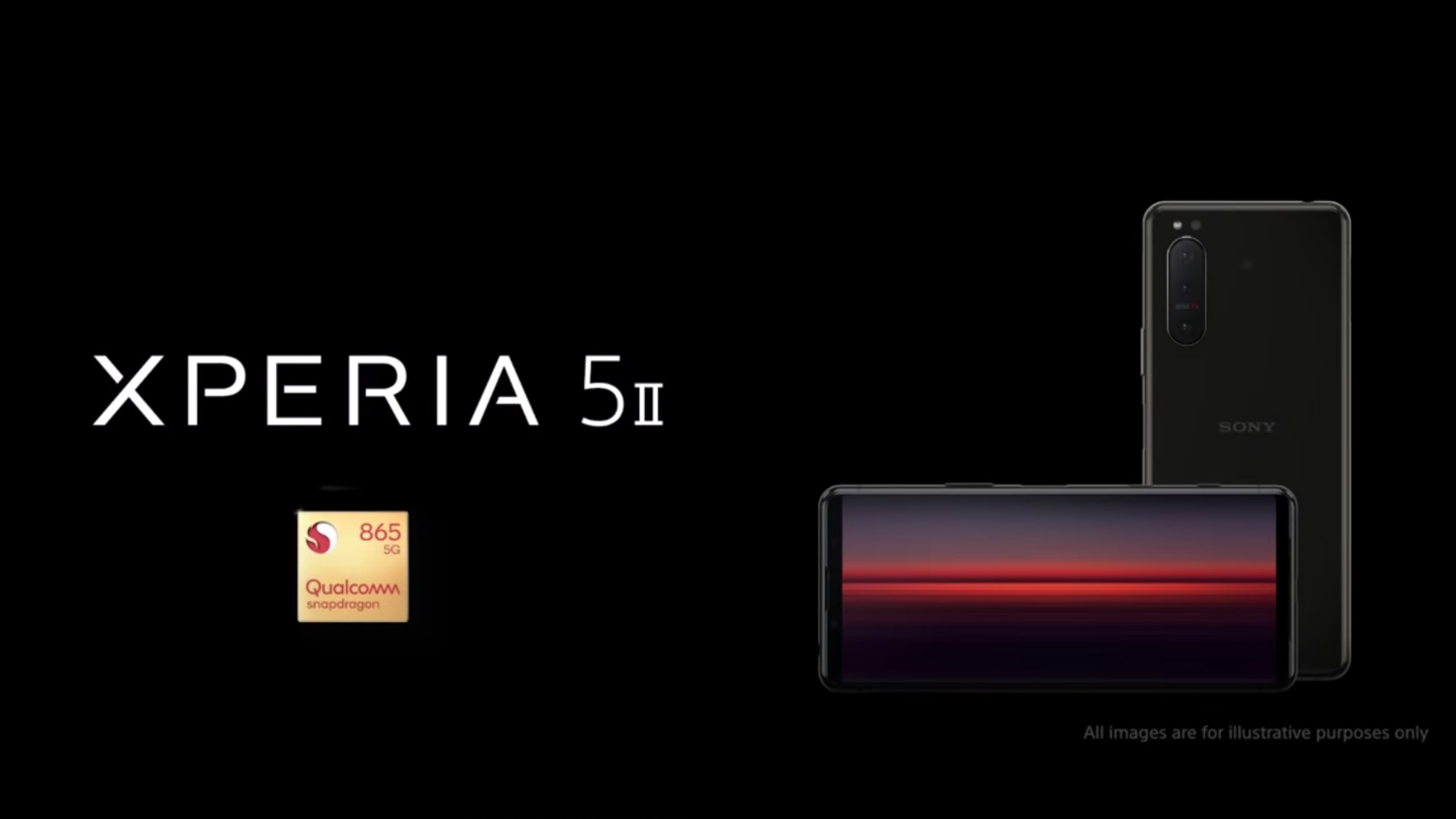Sony Xperia 5 II video leaked
The Sony Xperia 5 II will feature Eye AF for humans AND animals, 4K 120fps slow motion video & 20fps burst mode

UPDATE 07/09: A new three minute marketing video featuring the Sony Xperia 5 II has been leaked by @evleaks, showcasing the new and exciting specs that consumers can expect from this upcoming smartphone. The video spends quite a bit of time on the Sony Xperia 5 II's camera capabilities, informing us that the 5 II will be capable of Real–time Eye AF for both humans and animals, will have a choice of 24mm, 16mm, 70mm focal lengths and will have up to 20fps AF/AE continuous burst shooting.
For video enthusiasts, the Sony Xperia 5 II will have 4K HDR 120fps slow motion movie recording. It will also have a 3.5mm audio jack port – which is admittedly starting to become a rarity these days. See more information in the video below.
• Read more: iPhone 12
ORIGINAL STORY: The Sony Xperia 5 II is rumored to be lurking on the horizon – and now we've finally seen our first image of the phone. Notorious leakster Evan Blass has posted the photo, giving us our first glimpse at what we can expect from the second iteration of the Sony Xperia 5. Apparently, this upcoming smartphone will have a 6.1" FHD+ OLED display with a 21:9 aspect ratio, a 120Hz refresh rate and a 240Hz touch sampling rate (which how often the phone's screen senses where you're currently touching the screen – 240Hz would mean 240 times per second).
Plus, according to a report by Android Headlines, the Xperia 5 II will reportedly have the Snapdragon 865 chipset, 8GB of RAM and 128GB of expandable storage. It'll also feature 120fps video recording in 4K HDR and will have a 4,000 mAh battery that charges through a USB-C port with PD support.
The ZEISS T* logo still sits on the rear camera unit, which would signify that the Xperia 5 II will continue to use ZEISS T* lenses. However, unlike the Sony Xperia 1 II, there doesn't seem to be a 3D time-of-flight camera. The rear camera unit will include a wide angle, an ultra wide angle and a telephoto lens. All three cameras have sensors of 12MP, with the main camera having an equivalent focal length of 24mm and an aperture of f/1.7, the telephoto giving the user 3x optical zoom and the ultra wide offering a 16mm equivalent focal length with a 124º field of view.
Despite the lack of a 3D time-of-flight sensor, phone rumor website GSMArena has speculated that the Sony Xperia 5 II camera should be just as capable as that of the Sony Xperia 1 II. Apparently, this is partly due to the fact that there seems to be a shutter key on the right side of the phone. "Sony is the only company that still gives you a hardware button for that."
Get the Digital Camera World Newsletter
The best camera deals, reviews, product advice, and unmissable photography news, direct to your inbox!
Apparently, the second generation of the Sony Xperia 5 will have a 3.5mm headphone input, which the original Xperia 5 didn't have. There aren't many other specs to examine, but there is a rumor that the Sony Xperia 5 II will have a 5.6–5.8" display. This would be a smaller display than the original Xperia 5's 6.1" display and would apparently make the Sony Xperia 5 II the smallest 5G phone yet.
In addition, a recent rumor has indicated that both the Sony Xperia 5 II and the Sony Xperia 1 II will have three Android OS updates. This follows Samsung's recent announcement that it will give three Android OS updates to its flagship devices, beginning with the Galaxy S10 series from last year.
If Sony follows suit, this means that both the Sony Xperia 5 II and the Sony Xperia 1 II could finish up with Android 13 at the end of their supported lifetimes. This is quite the significant move from Samsung (and potentially Sony as well). It's possible that this could be an attempt to prove competitive against Apple.
While the iPhones certainly have their own foibles, one of the best aspects of them is that they're supported with software updates for an almost extraordinarily long time. The iOS 14 update scheduled for September will continue to support the iPhone 6s, a phone that's five years old. Admittedly, this will be the last software update that will support the 6s, but this is still pretty impressive.
In contrast, many Android phones will often only support one or two software updates, leaving users with the choice of updating their expensive phone or leaving their old (and often still perfectly working) handset more vulnerable to malware.
Read more
Best iPhone for photography in 2020: from the iPhone 7 Plus to 11 Pro
Best camera phone in 2020: which is the best smartphone for photography?
Best phone cases in 2020: protect your camera phone in style
With over a decade of photographic experience, Louise arms Digital Camera World with a wealth of knowledge on photographic technique and know-how – something at which she is so adept that she's delivered workshops for the likes of ITV and Sue Ryder. Louise also brings years of experience as both a web and print journalist, having served as features editor for Practical Photography magazine and contributing photography tutorials and camera analysis to titles including Digital Camera Magazine and Digital Photographer. Louise currently shoots with the Fujifilm X-T200 and the Nikon D800, capturing self-portraits and still life images, and is DCW's ecommerce editor, meaning that she knows good camera, lens and laptop deals when she sees them.


